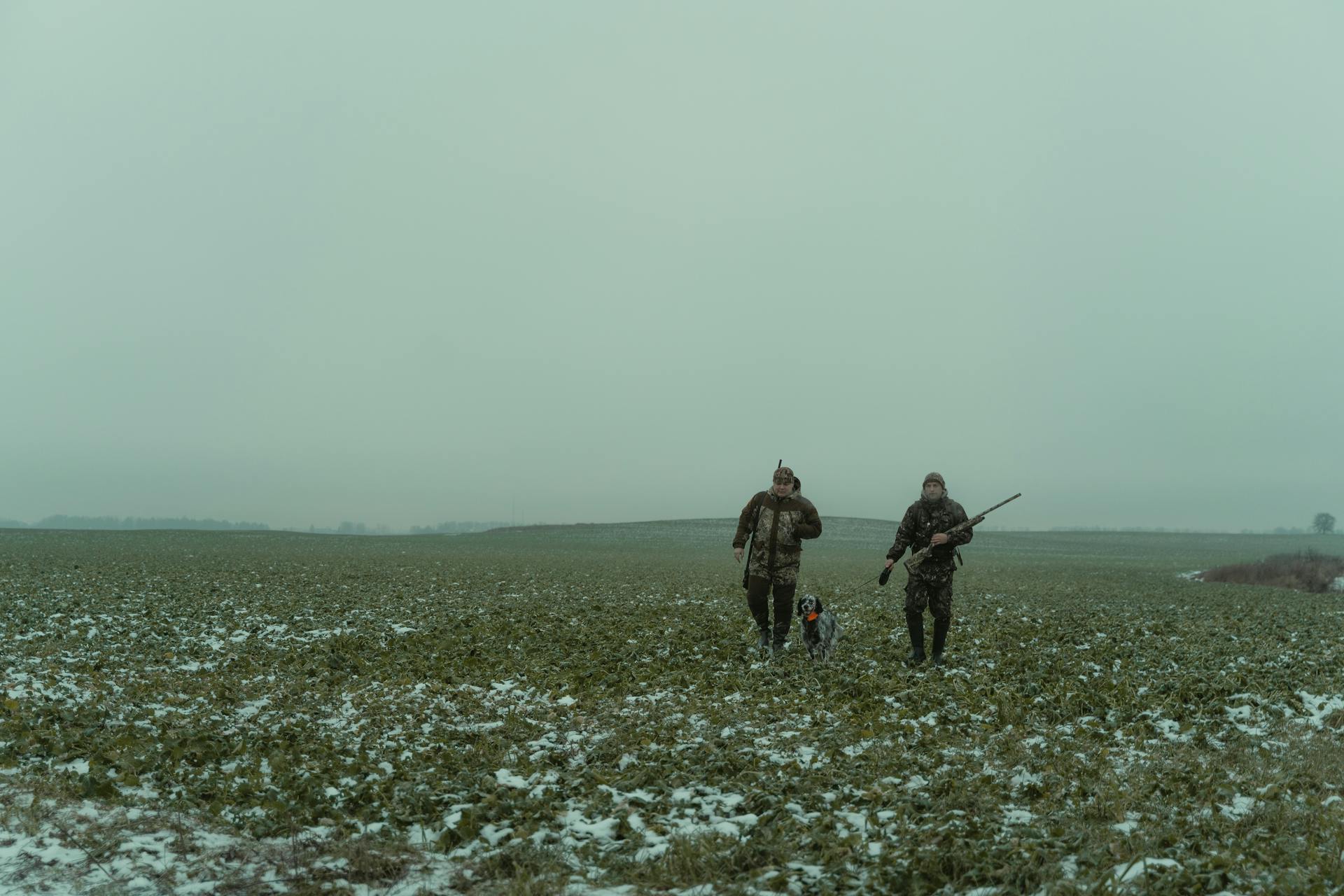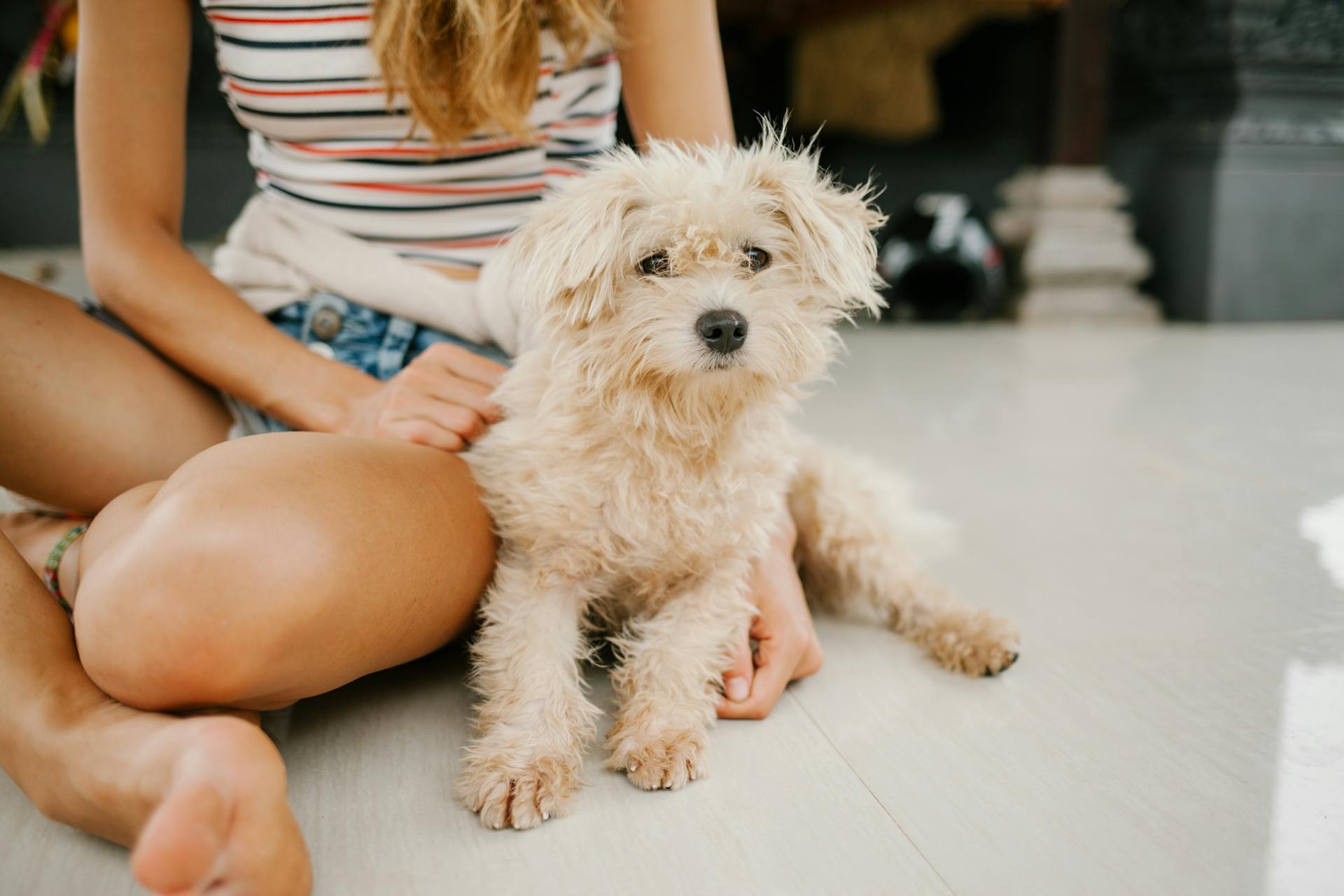
So you're considering bringing a Hamiltonstövare into your life? First and foremost, be prepared for a lot of energy - these dogs are bred to be hunting companions and need plenty of exercise to stay happy and healthy.
The Hamiltonstövare is a Swedish breed, developed in the 19th century to hunt small game like hares and birds. They're a medium-sized dog with a muscular build and a short, smooth coat that requires minimal grooming.
These dogs are highly intelligent and love to please their owners, making them relatively easy to train - but be prepared to be consistent and patient. They thrive on structure and clear communication, so a well-established routine is a must.
Physical Characteristics
The Hamiltonstövare is a medium-sized dog with a well-balanced and muscular frame. They typically stand between 49-61 centimeters (19-24 in) tall, with males being slightly taller than females.
Their short, dense coat is tri-colored, featuring a combination of black, tan, and white markings. The fur on the head, ears, and front legs is short and smooth, while the fur under the tail and back of the thighs is slightly longer.
Hamiltonstövares have a long head with an arched skull and well-defined stop. The muzzle is long, broad, and rectangular in outline, with a flat bridge that runs perfectly parallel to the top of the skull.
Their neck is long, with tight-fitting but supple skin, and is markedly more slender and refined in females. Males have an abundance of muscle, but females have a more refined appearance.
The breed's limbs are strong and athletic, but not heavily muscled, and are long, straight, and strongly boned. The shoulder joint is well laid back, allowing the dog to follow a scent with its head down.
Hamiltonstövares typically weigh between 23-27 kilograms (51-60 lb), with males weighing slightly more than females. They have a rectangular body shape, with a deep, long chest and moderately sprung ribs.
The stifles and hocks are well angulated, and the rear pasterns are short, lean, and straight.
Readers also liked: Bull Terrier Head Shape
Character and Temperament
The Hamiltonstövare is a friendly and sociable breed that forms strong bonds with its family members. They are generally good with children, but early socialization and training are crucial to ensure their hunting instincts are channeled correctly.
This breed can be stubborn, so it's essential to have an experienced owner who can recognize and handle such behavior. They have a strong hunting instinct and will take chase when given the opportunity, so it's not suitable for homes with smaller pets.
Hamiltonstövares are relatively low-maintenance and have a loud, baying voice that may deter intruders. However, they can be very loud when they've found something of interest, so be prepared for some excitement.
They have bundles of energy and can be somewhat skittish if under-stimulated, so make sure to provide plenty of exercise and mental stimulation. With proper management, this breed is gentle, pleasant, and intelligent, making them a great companion for active families.
Care and Maintenance
Hamiltonstövares are relatively low-maintenance dogs when it comes to grooming. They shed a low-to-moderate amount seasonally, requiring brushing with a grooming mitt twice a week.
Regular brushing is essential to prevent matting and tangling, and to keep their coat in good condition. It's also a great way to bond with your dog and get them used to handling.
Their nails should be trimmed regularly to keep them at or just above ground level, and their ears and teeth should be cleaned regularly as well.
Nutrition
As a responsible Hamiltonstovare owner, you'll want to ensure your furry friend is getting the right nutrients to thrive. A high-quality dog food formulated to their age, activity level, and size is essential. Monitor your Hamiltonstovare's food intake closely, and reduce portions if they start to gain excess weight.
Your veterinarian can help determine the best nutrition and feeding guidelines for your Hamiltonstovare.
Grooming
Grooming is an essential part of a dog's care and maintenance.
Brushing your dog regularly is a must, especially during shedding season. Brushing with a grooming mitt twice a week should suffice.
Trimming your dog's nails, cleaning their ears, and brushing their teeth should be part of every dog's grooming routine.
A short coat requires little grooming, and once-weekly brushing is more than enough to keep it in good condition.
Washing your dog too frequently can cause their hair to become brittle and their skin to become irritated.
Strong nails should be clipped regularly to keep them at, or just above, ground level.
Exercise
Hamiltonstovares are active dogs that require a lot of exercise to stay healthy and happy.
They seem to enjoy most activities, and their excellent hunting skills and high intelligence make them excellent candidates for dog sports like agility and lure coursing.
These dog sports are a great way to channel their energy and mental stimulation.
If they don't get enough exercise, Hamiltonstovares can get into trouble.
They need two long walks each day to burn off surplus energy and maintain a healthy body weight.
This daily exercise routine will help keep your Hamiltonstovare happy and healthy.
Health and History
The Hamiltonstövare has a rich history that dates back to the late 1800s when Count Adolf Patrick Hamilton of Sweden developed the breed.
In the late 1800s, Count Adolf Patrick Hamilton developed the Hamiltonstovare by crossing Harriers with English Foxhounds and three other now-extinct breeds from Germany.
The breed was first shown in Sweden in 1921 and has since gained popularity in other countries, although it remains relatively rare in America.
Hamiltonstovares are known for their ability to hunt alone or with one companion, a key difference between them and similar breeds.
Their origins are thought to be a mixture of scenthounds from Southern Germany and Switzerland, as well as Foxhounds and Harriers.
The breed was recognized by the United Kennel Club in 2006, acknowledging its unique characteristics and hunting style.
About and History
Count Adolf Patrick Hamilton of Sweden developed the Hamiltonstovare in the late 1800s with the goal of creating a dog that could handle challenging climates and terrain while hunting hare and fox.
He crossed Harriers with English Foxhounds and three other now-extinct breeds from Germany to create the Hamiltonstovare.
The resulting breed showed in Sweden for the first time in 1921 and has since gained popularity in some areas outside of Sweden, although it remains rare in America.
Hamiltonstovares prefer hunting alone or with one companion, which is a key difference between them and similar breeds.

The breed's origins are thought to be a mixture of scenthounds from Southern Germany and Switzerland, as well as Foxhounds and Harriers.
The Hamiltonstovare was initially called the Swedish Hound and was developed to be used for hunting hare and fox.
It has a keen nose, strong hunting instinct, and high levels of fitness and endurance, making it well-suited for its original purpose.
The breed's physical attributes reflect its hunting style, with rangy legs that can cover ground quickly and a long neck that allows it to keep its acute nose on a trail even at high speed.
Hamiltonstovares have an impressively loud voice, which allows them to attract their owner's attention from a great distance when their quarry is located.
Health
The Hamiltonstövare is a relatively healthy breed, but its active lifestyle comes with some risks.
Injuries can be a problem, especially to the cruciate ligament, which is the most significant concern.
This breed may inherit a malformation of the hip joints, known as Hip Dysplasia, which can cause intermittent or persistent lameness in young dogs.
Affected dogs may need medical or surgical treatment to manage the condition, but unfortunately, they're unlikely to be fit for hunting.
Explore further: Hip Dysplasia Bernese Mountain Dog
Frequently Asked Questions
How much is a Hamiltonstovare?
Native-born Hamiltonstovare puppies registered with AKC and UKC typically cost between $2,000 and $3,000. Learn more about this breed and its pricing in our upcoming blog post.
What is a Hamiltonstovare standard?
A Hamiltonstovare is a short-coated, tricolor hound with a sturdy build, longer than tall, and defined secondary sex characteristics. They exhibit a strong and athletic appearance, with females being slightly more refined.
What is the lifespan of a Hamiltonstovare?
A Hamiltonstovare's lifespan is approximately 12 years with proper care. With regular attention, they can thrive for a decade or more.
Featured Images: pexels.com

